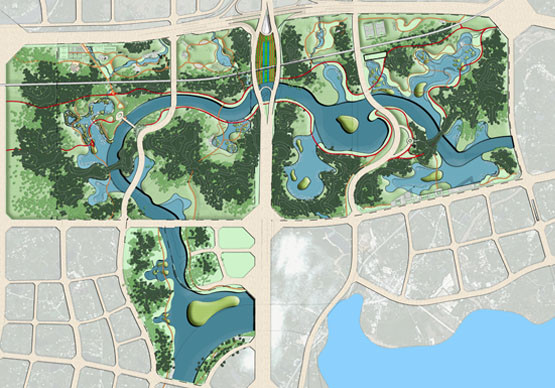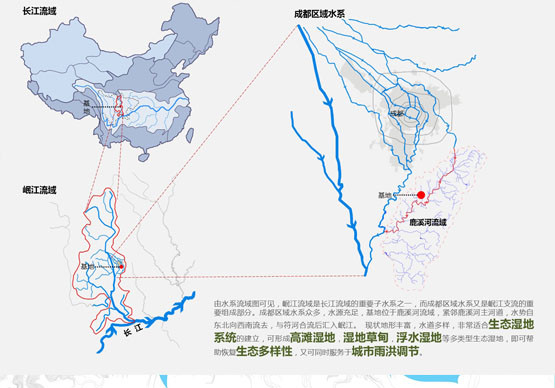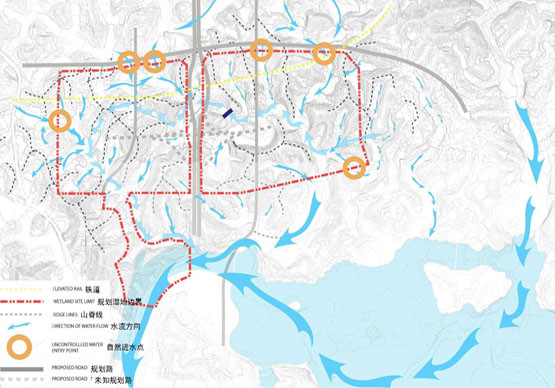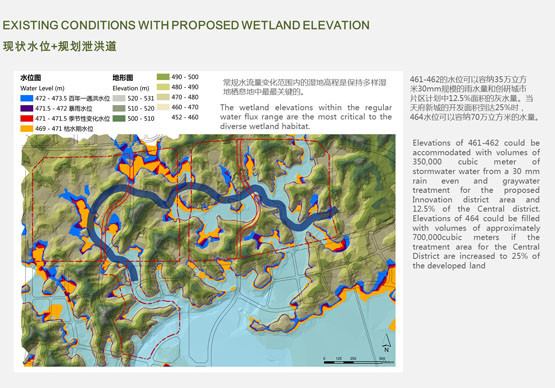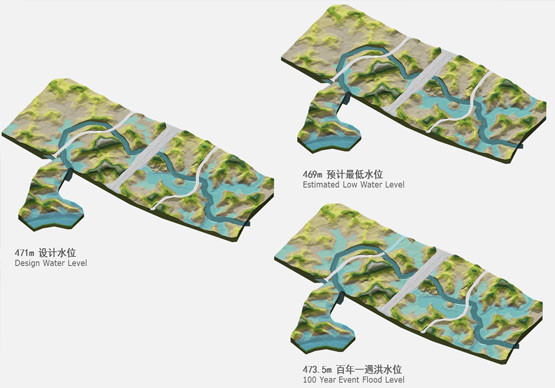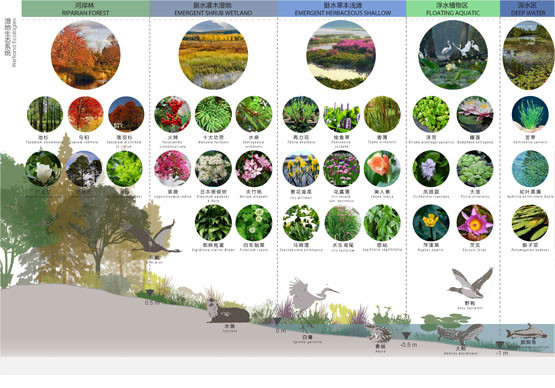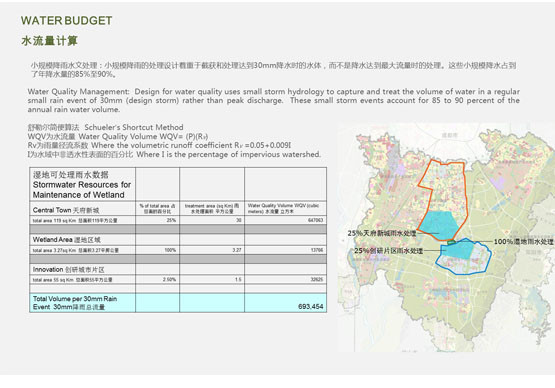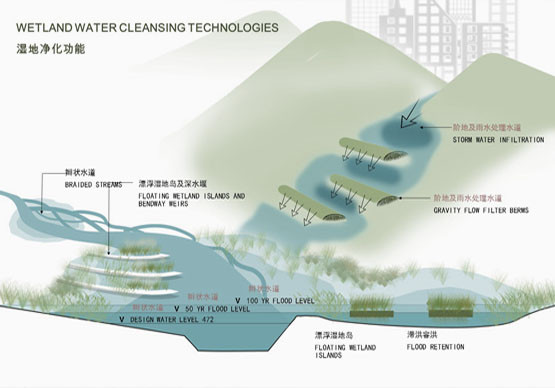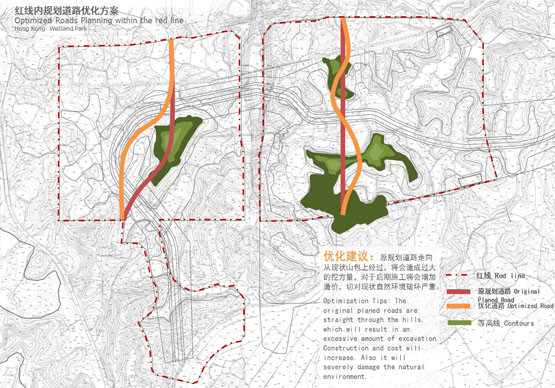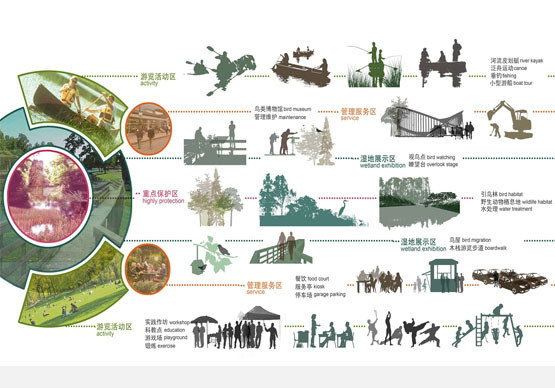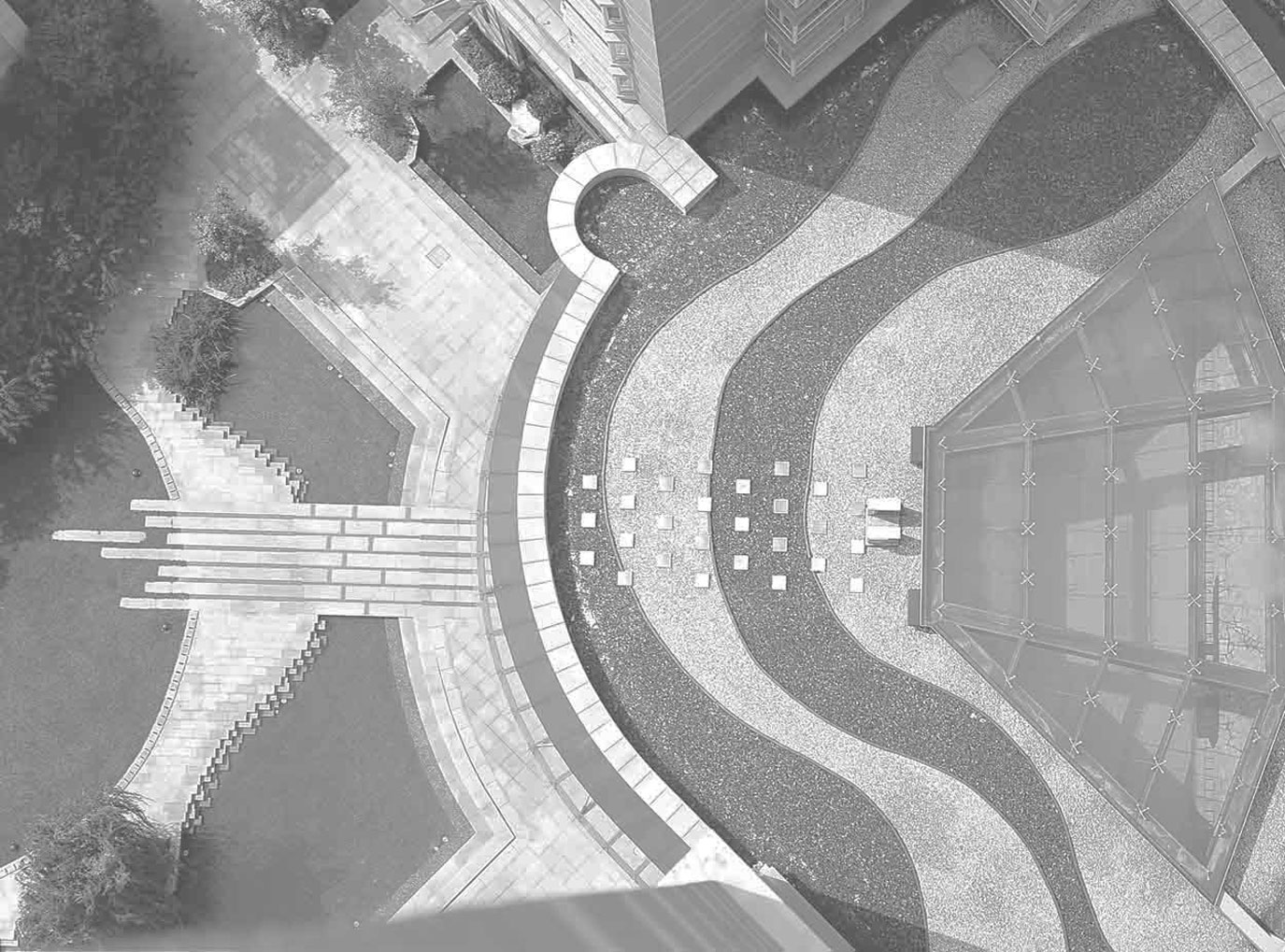
Project Name: TIANFU WETLAND PARK ENGINEERED NATURE
Location: Chengdu, China
Client: Municipality of Tianfu New Area
Year Designed: 2014
Chengdu is the home of the some of the oldest and most successful water engineering interventions in China. It afforded this region to become on of the leading agriculture production areas in China. As a natural system is transformed into an engineered sytem an artificial lake is kept at a stable water level routing water in during the dry seasons and diverting water through this site during the fold season.
The importance of understanding where the project is located within its watershed is crucial to understanding the wetland processes and their potential impact on water resources. In this way we can enhance the sustainability of the wetlands and freshwater resources for ecosystem conservation and for the benefit of society. An analysis of the proposed planning documents resulted in the placement and utilization of a variety of techniques for storm water and gray water treatment.
Like a natural system many measures are employed to retain the water resource at higher elevations and throughout the system which in turn reduces the volume and rate of flow. Design for water quality uses small storm hydrology to capture and treat the volume of water in a regular small rain event of 30mm (design storm) rather than peak discharge. These small storm events account for 85 to 90 percent of the annual rain water volume.
Recovery of water used in building sink and washer systems can be combined with Rainwater Harvesting to extend water use. Dish, shower, sink, and laundry water make up 50-80% of residential “waste” water. Using the average of 170 liters per person per day the resource available is as follows:
Elevations of 471-472 could be accommodated with volumes of 350,000 cubic meter of stormwater water from a 30 mm rain even and graywater treatment for the proposed Innovation district area and 12.5% of the Central district. Elevations of 474 could be filled with volumes of approximately 700,000cubic meters if the treatment area for the Central District are increased to 25% of the developed land.
-Water Quality Channels. These harness nature to cleanse water; creating environments for beneficial plants and microbes, provide filtration, and nutrient absorption and consumption.
-Reestablishment of forest with understory. Reforestation along streams and swales will create a riparian buffer which improves water quality and provides shade for headwater streams.
The littoral edge provides critical habitat and like many edge ecologies the most intense levels of biodiversity. The wetland elevations within the regular water flux range are the most critical to the diverse wetland habitat.
